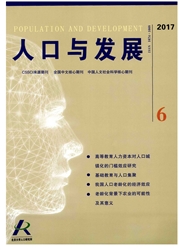

 中文摘要:
中文摘要:
从城镇化内涵的人口、经济、社会、设施四个方面构建城市化水平的综合评价指标体系。运用熵值法对甘肃省1996年和2009年两个时期的城镇化综合发展水平进行测度,并借助GIS技术,运用空间聚类法和空间自相关对城镇化水平的空间演变及分异进行分析。甘肃省城镇化综合水平在空间分布上存在较大差异。城镇化综合水平存在较强的空间自相关,呈现强集聚分布格局。两时期城镇化水平"北高南低、西高东低"的空间格局始终未改变。区域发展条件空间差异和区域经济发展的地域差异是甘肃省城市化综合水平空间分异产生和演变的主要驱动因素。
 英文摘要:
英文摘要:
From the essential meaning of urbanization, this paper establishes a comprehensive e- valuation index system, including four aspects changing: population, economy, society and infra- structure. GIS technology, spatial clustering method and spatial autocorrelation are used to analyze the spatial evolution of the comprehensive level of urbanization in Gansu Province in 1996 and 2009. The results show that the comprehensive levels of urbanization are quite different in the spatial distribution. The spatial pattern of comprehensive levels of urbanization in Gansu is more advanced in north- western region than that in south- eastern region in the two years. Spatial differences in regional conditions for development and geographical differences in regional eco- nomic development were the driving factors of the spatial differentiation of the comprehensive lev- el of urbanization in Gansu.
 同期刊论文项目
同期刊论文项目
 同项目期刊论文
同项目期刊论文
 期刊信息
期刊信息
